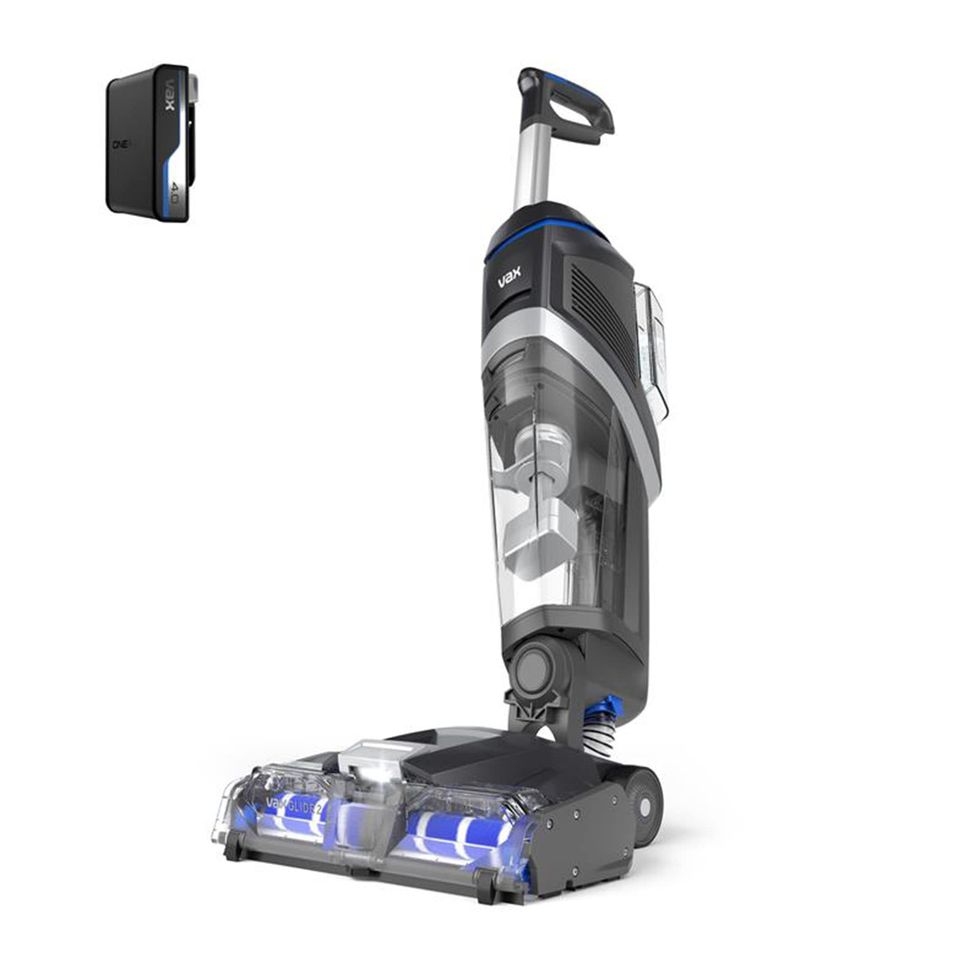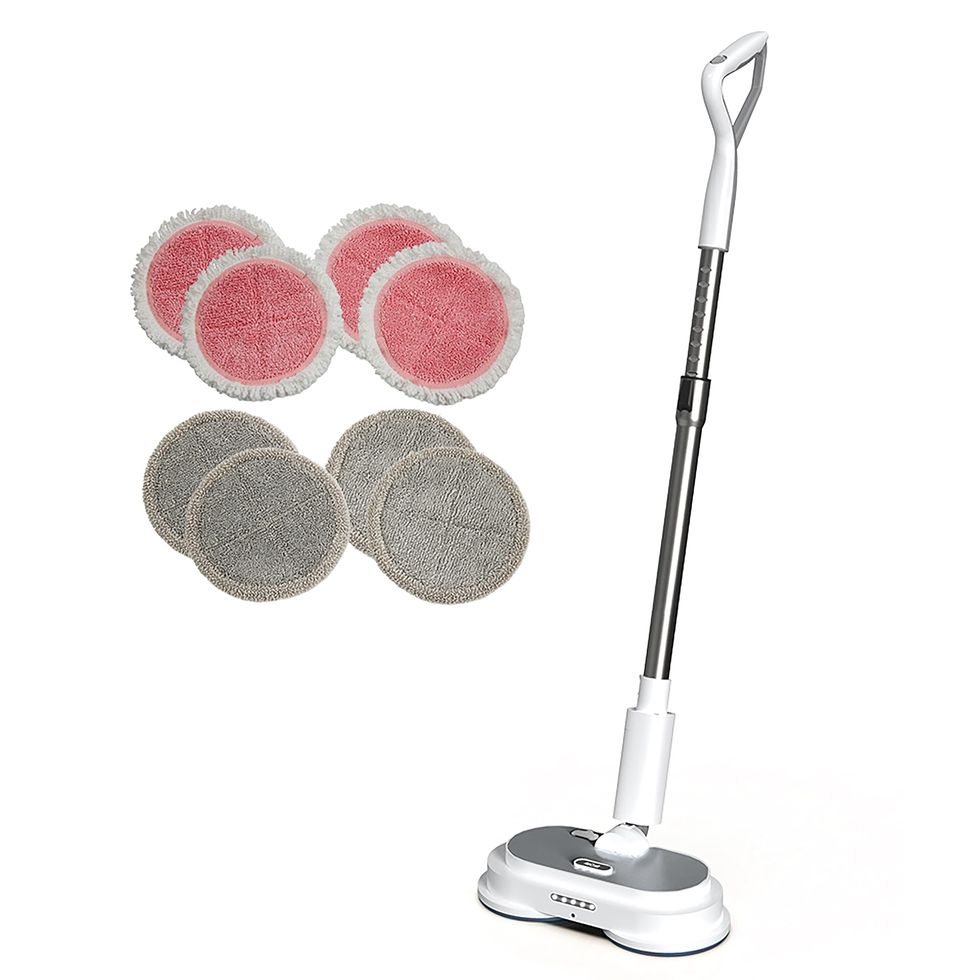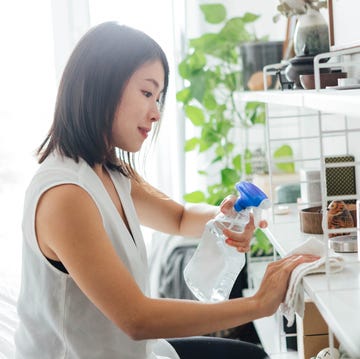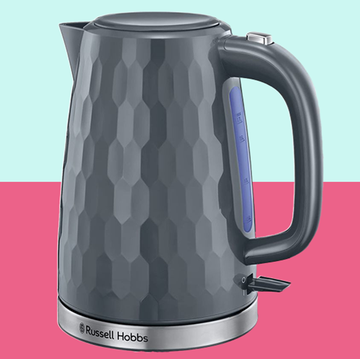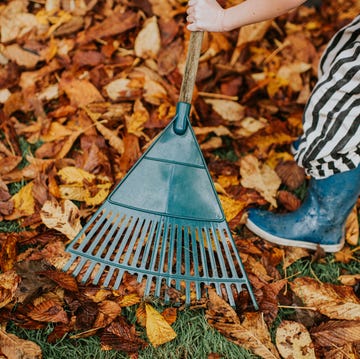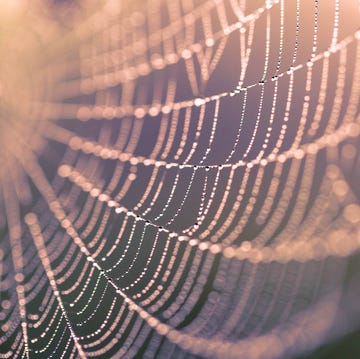I moved into my current flat almost a year ago now and one of my favourite parts of the place has always been the wooden floors. They're very old, well-loved and far from pristine, but they just add such character to the place. But, seeing as they are old, I’m always worried about causing any additional damage. The line between shabby chic and disheveled is very thin.
So I’ve been on the hunt to find effective ways to prevent any more scuffs to my poor tired floorboards, as well as some hacks for healing the ones I’ve already got. My aim, not to break the bank in the process.
What I found was that a lot of effective floorcare methods are seriously cheap, and often involve using what we've already got lying about the house. I spoke with Yarl Christie, flooring specialist and Founder of Stories Flooring to make sure these hacks were helpful, not hurtful. “Keeping wooden floors looking beautiful over the long term is a key part of creating a warm and inviting home. But accidents happen!” So that's where we come in.
What to read next
How to prevent scuffed floors
If I’ve said it once, I’ve said it a million times- the best offence is a good defence. The best way to get rid of scuffs and scratches is to not have them in the first place. So these are a couple of tricks you can put in place now, and thank us later.
Lift, don’t drag
This one is definitely a case of discipline. Dragging furniture is obviously easier and often automatic, but it’s the main cause of scuffs and scratches. “Even minor movements can leave deep scratches on wooden surfaces.” says Yarl. “To make moving items easier, invest in protective felt pads for furniture legs. This allows you to reposition furniture without worry.”
Use the right cleaning tools
Lot’s of floor-care products are not actually made with wood in mind. For instance, steam mops can cause long-term damage as they can force too much moisture into the seams, softening the wood and making them more susceptible to scuffs. Instead, Yarl recommends a lightly damp mop and a pH-neutral cleaner made for wooden floors, that’s effective yet gentle on the finish, like Flash's all purpose wooden floor cleaner.
Dirty boards
Of course nobody wants a house full of dirt or food and drink spills, but this is not just about cleanliness. “Dirt and grit can act like tiny abrasives that scratch the surface of your floor over time.” says Yarl. To combat this, he suggests, "using doormats at entrances and vacuuming regularly with a soft brush attachment to keep your floors in great shape.”
Similarly to the steam mop, any spilt liquids must be cleaned up straight away as they too can seep into the joints and seams of the boards. In time this can cause swelling and mould.
Chair leg protection
A large amount of scuffs and scratches on wooden floorboards are caused by chairs. As we push back to get away from our desks or dining room table, we drag chair legs across the floor with mass friction and weight, in other words, we're just asking to get scuffs and scratches.
There are plenty of solutions for this. You can buy specially made protective pads or chair socks that are made with this issue in mind. But, there are also some items that could do the trick just as well, and they might already be in your cupboard.
You can use old socks or fabric by sewing or using elastic bands to fit them to the legs. Have a surplus of wine corks at home? Me too- don't judge. You can actually cut those corks to size and glue them to the chair legs for a natural, protective barrier. Leather scraps is another effective material for your chair leg crafts, plus it looks a little bit more chic than the socks.
No shoes policy
This may be the trickiest one to implement, especially if you or your friends consider yourself fashion first people- think that one episode of Sex and The City with the missing Manolos. However, according to Yarl, “Shoes like high heels or cleats can create concentrated pressure points that lead to dents and scuffs.”
A no-shoes policy indoors will naturally help avoid this. Perhaps try adopting the Japanese practice of providing cosy house slippers for guests. Keeping everyone comfortable (exposed toes out of sight) and floors protected.
Trim your pets nails
It’s a damn good thing they’re cute, because our furry friends can cause a serious amount of household damage, all over the home but especially to our floors. “For pet owners, regular nail trims can be a lifesaver in preventing fine scratches. Placing rugs in high-traffic areas can also provide extra protection and comfort for your furry friends.” suggests Yarl.
DIY fixes for scuffs
If, like me, you’re already host to a scuff or two, there are some really effective (and weird) DIY hacks for reducing scuffs and improving the appearance of your boards.
The walnut trick
This is probably the best known hack for soothing minor scrapes in woodwork. Simply, rub a walnut over the affected area, and watch the magic happen. Rubbing the meat of the nut onto the scratch can help to fill it in and blend it with the rest of the wood by using its natural oils.
Ground coffee
Yarl recommends this trick if you’ve got light scratches on darker wooden floors. Take coffee grounds and gradually add water until it forms a paste. Around one teaspoon of water to every two tablespoons of coffee. “This can effectively mask minor scratches with the bonus of leaving a pleasant coffee aroma in your home, if you like the smell of coffee that is.” The coffee will stain the wood, darkening the exposed area within the scratch making it far less noticeable. Leave the stain to sit for several hours until it's taken, and wipe away the excess.
Tennis balls
This might be my favourite from the list, in part because of how unexpected it was, but also because of how effective and easy to implement it is. Although it should be said this is one for topical scuff marks, like the ones caused by rubber friction from shoe soles, not deep scratches.
“For light scuffs, attach a clean tennis ball to the end of a broom and gently rub it over the marks. This method not only lifts the scuffs but also adds a little shine to the floor.” says Yarl. The gentle abrasive nature of the felt surface creates friction when rubbed against the rubber residue or other material causing the mark, lifting the stain without damaging the floor's finish. Attaching it to the end of a broom also saves you from getting on all fours and scouring the floor.
Crayons
This one might be a fun one to get the kids or grandkids involved in, especially if they happen to be the source of the scratch. “Using a crayon that matches your floor colour is a fun and effective way to cover small scratches.” suggests Yarl. “Simply colour over the scratch and buff gently with a soft cloth for a quick touch-up.” While it might not be perfect, it will make it so much less obvious. I've actually tried this trick on some wooden stools, and was impressed by how close a match I got.
Bicarbonate of soda
Through this job, I’ve come to learn there really is nothing bicarbonate of soda can’t do. “For stubborn stains, create a paste with bicarbonate of soda and water. Apply it to the affected area, let it sit for a few minutes, and then scrub gently with a soft cloth for effective cleaning.” suggested Yarl. Then simply take a step back and admire your spotless floor.
GH's official guidance for cleaning sealed and unsealed wooden floors
If you’ve got sealed wooden floors, lucky you, because they’re pretty easy to keep looking good. The GH team of experts advises to give them a regular sweep to banish dust and grit, then whip out a damp (not soaking!) mop for a quick once-over. A gentle, pH-neutral cleaner will do the trick, and don’t forget to dry the floor afterwards, no one wants soggy floorboards and certainly not mould. Also for all wooden floors, it's a good rule of thumb not to vacuum when there is visible debris as the can lead to scrapes and scratches, so stick to the broom.
But if your floor is unsealed or waxed, especially the kind with gaps between the boards, step away from the mop! Water is their worst enemy and can cause the wood to swell, warp, or even crack. Instead, stick to regular sweeping and treat them to a polish every now and then with a suitable wax or oil. It keeps them looking gorgeous without the drama of water damage.









